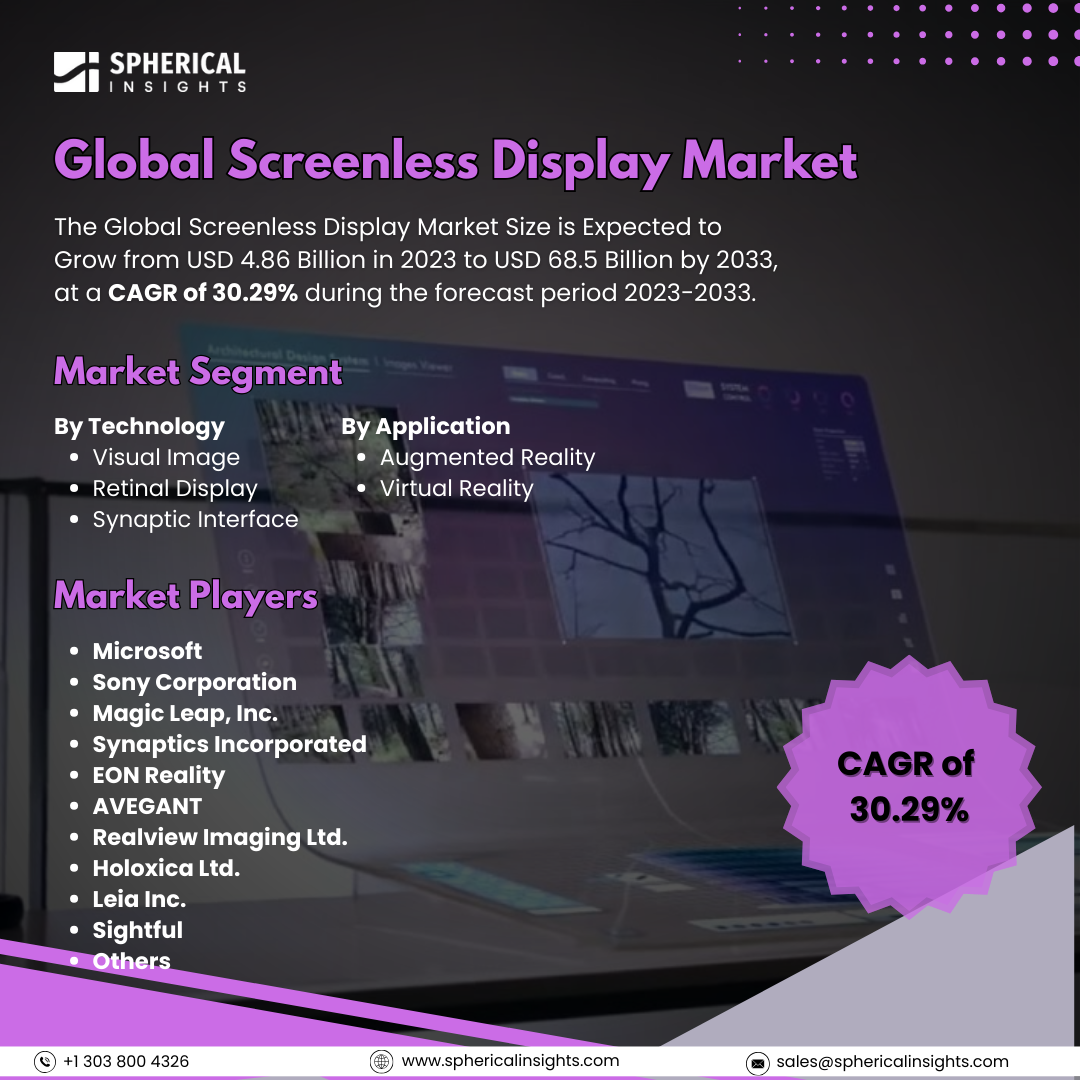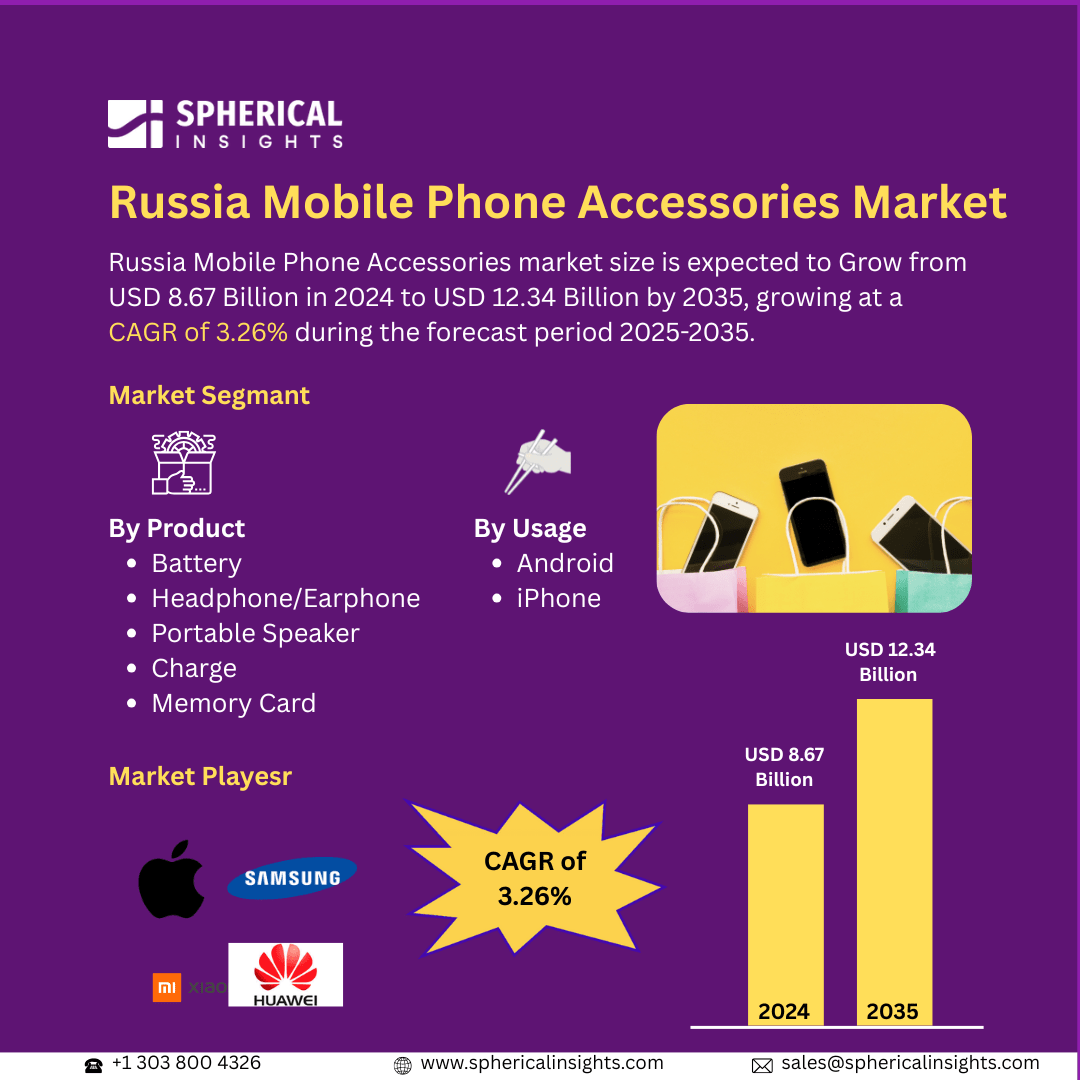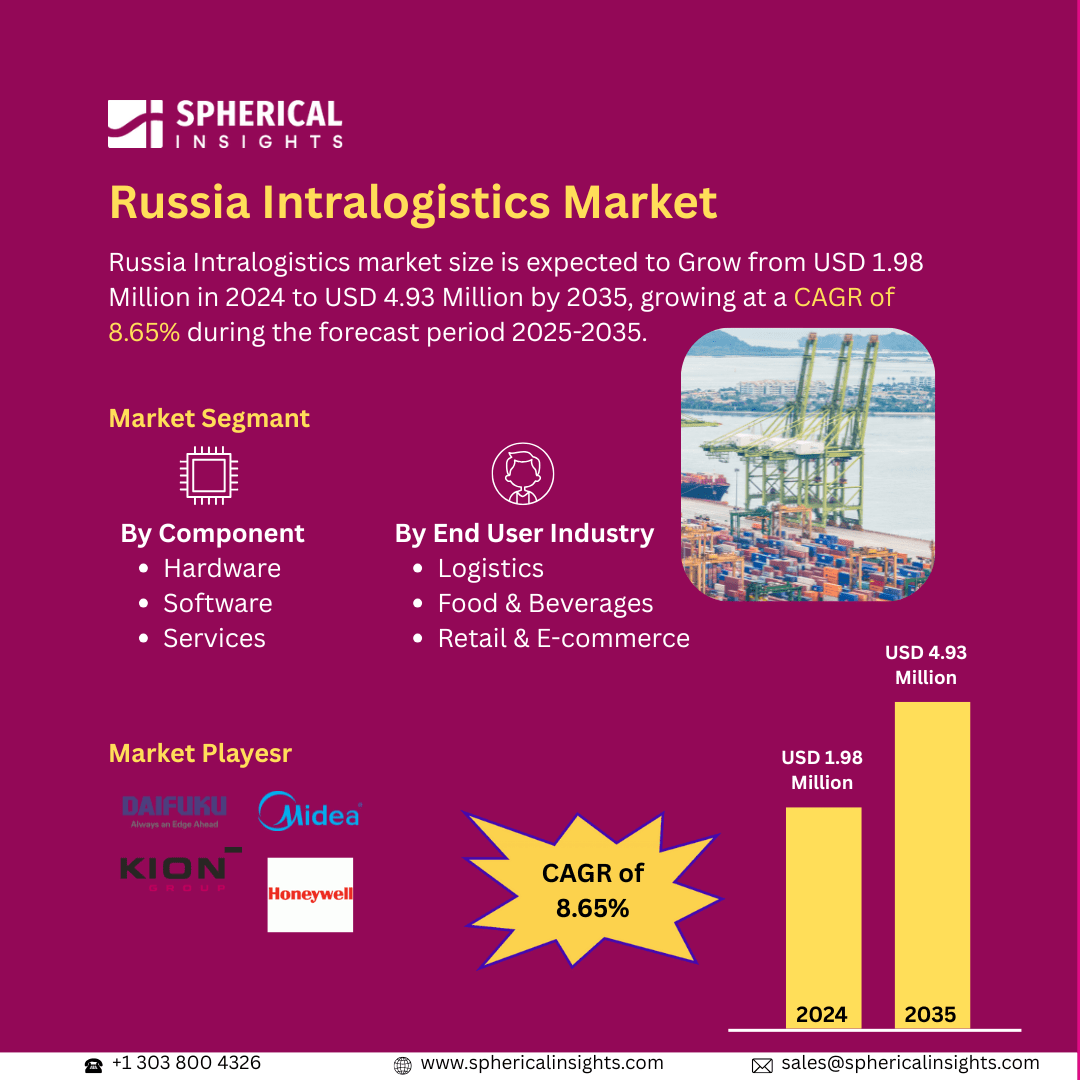Global Screenless Display Market Size to Exceed 68.5 Billion by 2033
According to a research report published by Spherical Insights & Consulting, The Global Screenless Display Market Size is Expected to Grow from USD 4.86 Billion in 2023 to USD 68.5 Billion by 2033, at a CAGR of 30.29% during the forecast period 2023-2033.
Browse 210 market data Tables and 45 Figures spread through 190 Pages and in-depth TOC on the Global Screenless Display Market Size, Share, and COVID-19 Impact Analysis, By Technology (Visual Image, Retinal Display, Synaptic Interface), By Application (Augmented Reality, Virtual Reality), and By Region (North America, Europe, Asia Pacific, Latin America, Middle East, and Africa), Analysis and Forecast 2023 – 2033
The screenless display market is the sector dedicated to next-generation display technologies that present visual data without the use of a conventional screen. Such solutions involve holographic displays, retinal projection, and gesture interfaces, allowing users to engage with digital content via light, movement, or direct retinal imaging. Moreover, the screenless display market is propelled by developments in virtual reality (VR), augmented reality (AR), and artificial intelligence (AI), the growing need for immersive experiences, and the trend towards gesture-controlled and holographic technologies. Expansion in healthcare, automotive, aerospace, and consumer electronics, and the demand for smaller, power-efficient displays, further drive market growth. However, the screenless display market is hindered by factors such as high manufacturing costs, low consumer awareness, technical challenges in retinal projection and holography, and compatibility issues with current systems, impeding widespread adoption across sectors.
The visual image segment accounted for the largest share of the global screenless display market in 2023 and is anticipated to grow at a significant CAGR during the forecast period.
On the basis of technology, the global screenless display market is divided into visual image, retinal display, and synaptic interface. Among these, the visual image segment accounted for the largest share of the global screenless display market in 2023 and is anticipated to grow at a significant CAGR during the forecast period. This is because of its extensive application in holographic displays, heads-up displays (HUDs), and augmented reality (AR). Automotive, healthcare, and consumer electronics industries are embracing visual image technology for immersive experiences, making it the market leader, with widespread use across industries.
The augmented reality segment accounted for a substantial share of the global screenless display market in 2023 and is anticipated to grow at a rapid pace during the projected period.
On the basis of the application, the global screenless display market is divided into augmented reality and virtual reality. Among these, the augmented reality segment accounted for a substantial share of the global screenless display market in 2023 and is anticipated to grow at a rapid pace during the projected period. This is because of its expanding use in defense, automotive, retail, and healthcare. AR screenless display technology, such as heads-up displays (HUDs) and holographic projection, improves everyday interactions, becoming more prevalent compared to virtual reality (VR) technology.
North America is projected to hold the largest share of the global screenless display market over the projected period.
North America is projected to hold the largest share of the global screenless display market over the projected period. This is because of the widespread use of augmented reality (AR), virtual reality (VR), and holographic technology in industries such as healthcare, automotive, and aerospace. Being present in their key technology vendors, having big R&D expenses, and looking for innovative displays also contribute towards market growth and the U.S. is among the leaders for adoption.
Asia Pacific is expected to grow at the fastest CAGR of the global screenless display market during the projected period. This is powered by the increasing adoption of AR, VR, and holographic technologies across sectors such as consumer electronics, automotive, and healthcare. China, Japan, and South Korea are heavily investing in cutting-edge display solutions, spurred by mounting R&D, rising tech-conscious consumers, and growing industrial uses.
Company Profiling
Major vendors in the global screenless display market are Microsoft, Sony Corporation, Magic Leap, Inc., Synaptics Incorporated, EON Reality, AVEGANT, Realview Imaging Ltd., Holoxica Ltd., Leia Inc., Sightful, and Others.
Key Target Audience
- Market Players
- Investors
- End-users
- Government Authorities
- Consulting and Research Firm
- Venture capitalists
- Value-Added Resellers (VARs)
Recent Development
- In May 2024, Sightful launched Spacetop G1, a revolutionary screenless laptop that substituted conventional displays with hovering virtual screens seen through in-built AR glasses. The latest version comes after the Spacetop Early Access model, which was delivered to early adopters last year, and Sightful will upgrade all current users to the consumer G1 model.
Market Segment
This study forecasts revenue at global, regional, and country levels from 2023 to 2033. Spherical Insights has segmented the global screenless display market based on the below-mentioned segments:
Global Screenless Display Market, By Technology
- Visual Image
- Retinal Display
- Synaptic Interface
Global Screenless Display Market, By Application
- Augmented Reality
- Virtual Reality
Global Screenless Display Market, By Regional
- North America
- Europe
- Germany
- UK
- France
- Italy
- Spain
- Russia
- Rest of Europe
- Asia Pacific
- China
- Japan
- India
- South Korea
- Australia
- Rest of Asia Pacific
- South America
- Brazil
- Argentina
- Rest of South America
- Middle East & Africa
- UAE
- Saudi Arabia
- Qatar
- South Africa
- Rest of the Middle East & Africa



